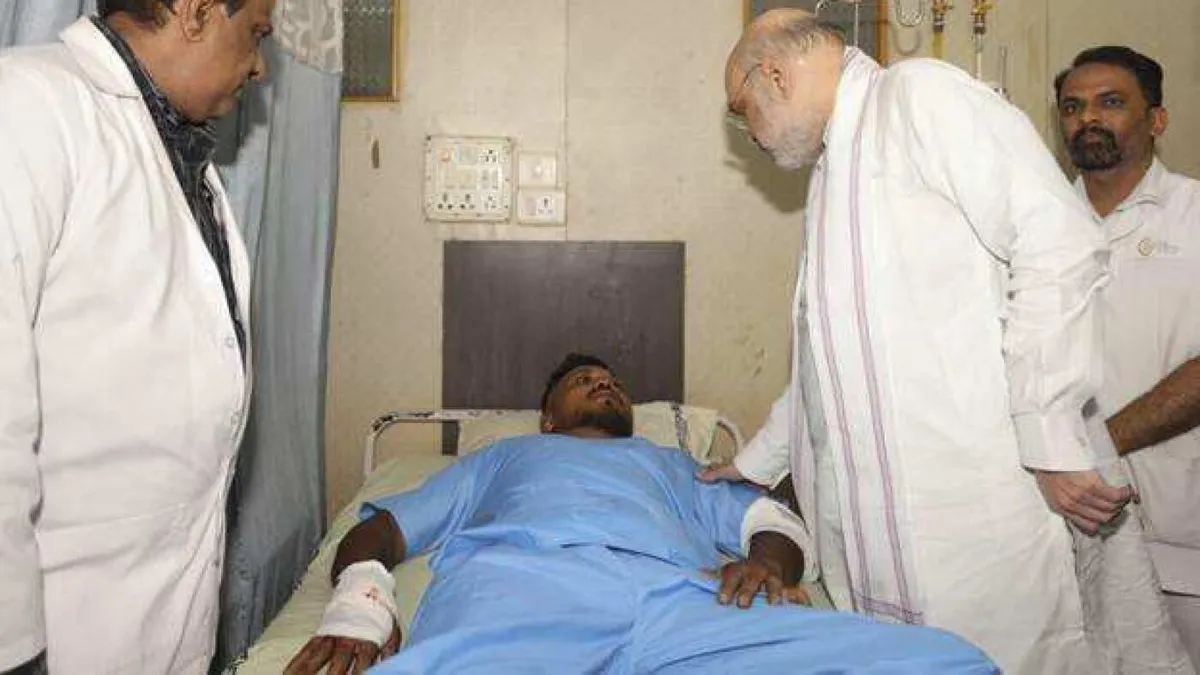
The sole survivor of the tragic Air India crash that claimed the lives of over 240 individuals is still grappling with disbelief over his miraculous escape. Lying in a hospital bed on Friday morning, Viswashkumar Ramesh recounted his harrowing experience to Indian national broadcaster DD News. “I can't believe myself how I came out of it alive,” Ramesh expressed, adding that he initially feared for his life. “When I opened my eyes, I saw that I was alive. So I tried to open my seat belt, and I was able to get out.”
Ramesh was one of the 242 passengers aboard the London-bound Boeing 787 Dreamliner, which tragically crashed shortly after taking off from Ahemdabad on Thursday. The aircraft struck a medical college hostel, leading to devastating casualties not only among the passengers but also among those inside the building. Ramesh, identified by India Air as a British national of Indian origin, resides in London with his family and was returning home with his brother after visiting relatives.
Shortly after takeoff, Ramesh described a terrifying moment when the aircraft seemed to stall. “After 5-10 seconds, it seemed like the aircraft was stuck,” he recalled, noting that green and white lights illuminated the cabin before the plane collided with the hostel. Eyewitness videos indicate that the plane was airborne for merely half a minute before it crashed in a fiery blaze.
Seated in 11A, a window seat in the first exit row, Ramesh's part of the plane landed on the ground floor of the hostel. “When my door broke, I saw there was a bit of space,” he explained. “So I tried to get out and I was able to get out.” He clarified in an interview with The Hindu that he did not jump from the wreckage; instead, he simply walked out.
Footage from Indian media shows Ramesh, wearing a white T-shirt stained with blood and dirt, limping towards an ambulance. He suffered multiple injuries, including a laceration on his face and a burn on his hand from the fire. Dr. Dhaval Gameti, who treated Ramesh at Ahemdabad Civil Hospital, confirmed that while he was disoriented with injuries, he was out of immediate danger. However, the bittersweet nature of his survival is overshadowed by the tragic loss of his brother, Ajay, who was sitting across the aisle and did not survive the crash.
Back in the U.K., Ramesh's other brother, Nayan Kumar Ramesh, shared that he immediately video-called their father after the crash to inform him of his survival, expressing concern for Ajay’s safety. “When he called us he was just more worried about my other brother, like 'Find Ajay, find Ajay,'” Nayan told the BBC. His focus on his brother amidst his own trauma emphasizes the profound loss his family is experiencing.
Ramesh's survival is especially remarkable given his seat's location, which is generally considered less safe. Aviation expert John Hansman from MIT explained that typically, the back of an aircraft is regarded as the safest area during a crash because it serves as a shock absorber. In this case, however, the tail likely struck the ground first, causing the fuselage to rotate and break upon impact. This critical structural failure created an opening that allowed Ramesh to escape before the flames engulfed the wreckage.
While accidents like this are extremely rare, Hansman emphasizes the importance of adhering to basic safety practices when flying. “Put your seat belt on tight, know where the exits are,” he advises. As illustrated by Ramesh's experience, swift evacuation can be crucial. “Don’t wait and grab your stuff, just get away as quickly as you can,” he concluded.
Ramesh’s story serves as a reminder of the fragility of life and the importance of being prepared for emergencies, even in the skies.